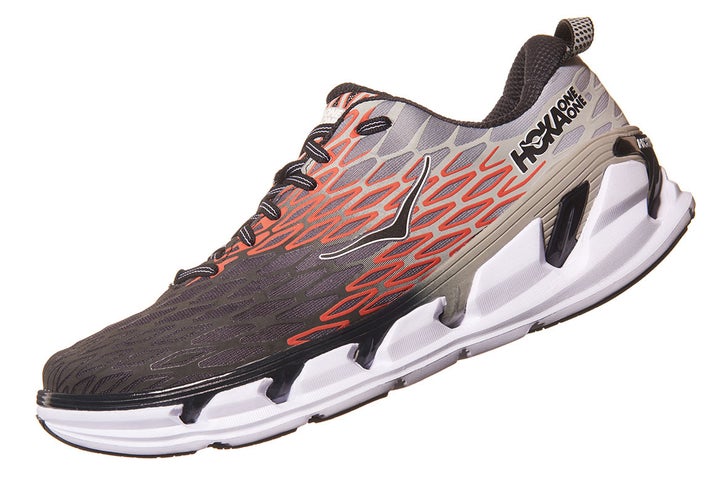New perk! Get after it with local recommendations just for you. Discover nearby events, routes out your door, and hidden gems when you sign up for the Local Running Drop.
Scientists finally figured out how the weight of your running shoes affects your speed.
On the north side of the University of Colorado Boulder campus lies a small, nondescript building tucked between a residence hall and the campus recreation center. Its sign says, “Arts and Sciences,” but it might as well say, “Endurance geeks, enter here.”
It’s the Locomotion Lab, a compendium of curiosity for all things endurance. Roger Kram, Ph.D., is in charge of the place. A biologist and Nike consultant who’s been running since 1975, he’s currently on a seven-year run streak. His team of researchers are no slouches either: Master’s student Shayala Kipp is an elite steeplechase runner who made the 2012 Olympic team and finished second in the 2015 Pan American Games; post-doctoral researcher Wouter Hoogkamer, Ph.D., was a track athlete who now runs marathons in the low 2:40s.
The team has worked on studies with titles all tri geeks will appreciate, from “Biomechanical Basis for the Energetic Cost of Human Running” to “Biomechanics of Bicycle Saddles.” Recently, they dove into an issue that nobody’s been able to reliably quantify: how much the weight of your running shoes affects your speed.
Athletes like to look at shoe weights, but that stat doesn’t mean much without attaching performance data to extra ounces. Getting that info, however, is tough. While it’s well-documented that running with heavier shoes causes an increase in energy expenditure, no reputable study had shown that extra energy expenditure directly causes slower times.
“Testing performance is a lot harder because it critically depends on the athlete’s motivation,” says Hoogkamer. “If we told our subjects that we wanted to measure how much heavy shoes slow down their 3K time-trial performance and then handed them the heavy shoes, they would have run much slower.”
The Locomotion Lab team set out to design an experiment that would remove as many psychological variables as possible. After securing funding from Nike and recruiting a group of sub-20-minute 5K runners for the study, the researchers conducted a tightly controlled series of tests on the university’s indoor track.
“I was told very little,” said Andy Wacker, 27, a study participant who ran for CU Boulder before becoming a standout ultrarunner. “It was a basic introduction, that the study would consist of three 3K time trials a week apart. I was to wear a watch and heart-rate monitor, but the watch face was covered so I couldn’t get any splits.”
Unbeknownst to Wacker and the rest of the subjects, each of the 3K time trials was conducted in a different pair of shoes: a normal (or “control”) pair plus two visually identical pairs weighted down with 100 grams and 300 grams of lead pellets inside the tongues. To keep the runners from catching on, researchers insisted on putting on and taking off the shoes for the test subjects.
“I really couldn’t tell any differences between the performances,” says Wacker. “Without splits, each time trial just felt difficult.”
Unaware of the differences in shoe weights, subjects ran roughly 1 percent slower for every 100 grams of lead added to the shoes in the 3,000-meter time trials. This consistent decline in performance is the first time researchers have demonstrated that adding mass to a running shoe has the same negative effect on running performance as it has on the energetic cost of running.
In layman’s terms: Lighter is faster. An elite athlete wearing shoes 100 grams lighter than normal could potentially shave 57 seconds off his marathon time. However, Hoogkamer warns of diminishing returns, a topic of a future study: “I think it will be interesting to look more into potential speed effects, as our data suggest that the penalty of adding shoe mass becomes less at higher speed.”
Lighter is faster, but is it better?
Don’t sacrifice comfort in pursuit of speed, advises Hoogkamer. When shoe mass is reduced by removing cushioning, it actually causes runners to expend more energy absorbing shock from each foot strike. Weight should be only one factor of many in the shoe selection process. Luckily, extra cushioning doesn’t have to mean extra weight. Three shoes that strike that tricky balance:


